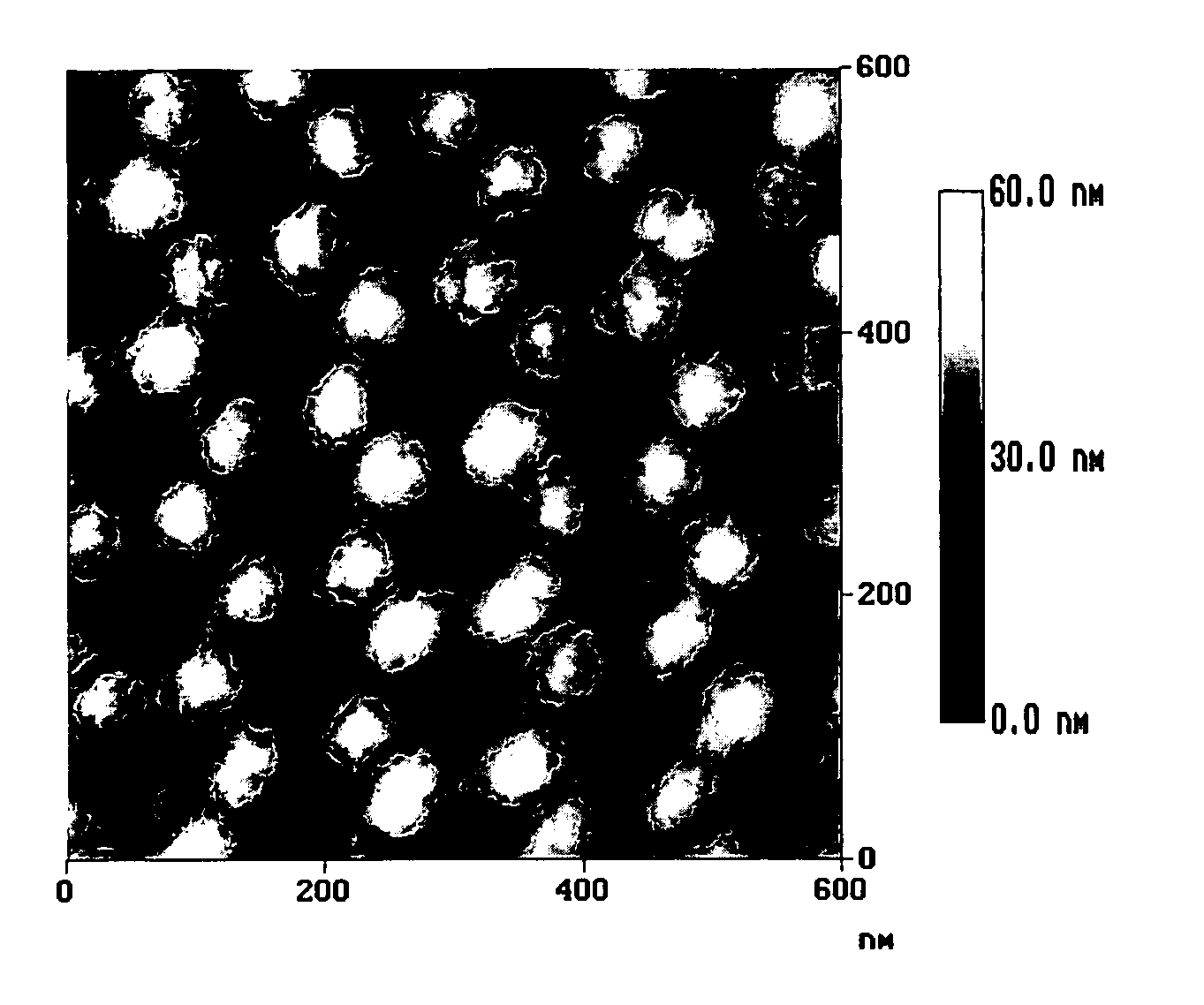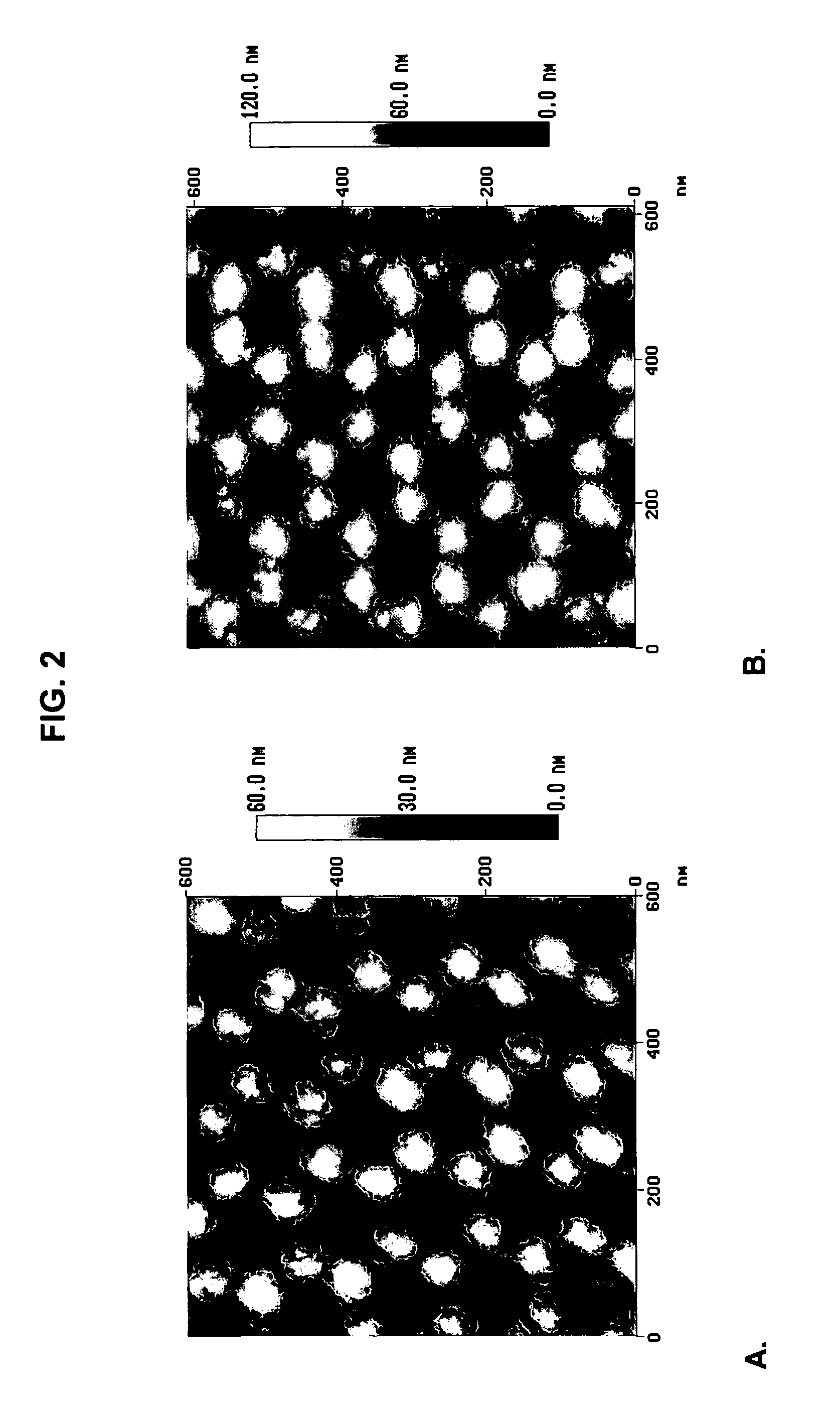Nanostructures synthesized using anodic aluminum oxide
a technology of aluminum oxide and nanostructure, applied in the field of nanostructures and anodic aluminum oxide membranes, can solve the problems of inapplicability, hampered application of cnts prepared using the aforementioned methods, and inconvenient procedures
- Summary
- Abstract
- Description
- Claims
- Application Information
AI Technical Summary
Benefits of technology
Problems solved by technology
Method used
Image
Examples
Embodiment Construction
[0023] The present invention provides methods of fabricating nanostructures using anodic aluminum oxide membranes as templates and / or supports for the nanostructures. Thus, nanotubes, arrays of palladium nanobeads, and the like may be readily prepared in a predictable fashion using inventive methods. The template AAO membranes include flat surfaces with large-area periodic arrays of uniformly sized pores. The flat surfaces of the AAO membranes include the top and bottom surfaces onto which the pores open or at which the pores end (i.e. blind pores). By “periodic array of pores” it is meant that the pores are positioned relative to each other in a substantially non-random order including, but not limited to, a repeating pattern. The pores of the AAO membranes are of uniform size and thus have diameters that vary by 10% or less or even 5% or less of the average diameter of pores in a given array. In comparison, the variability of pores in other porous membranes such as polycarbonate c...
PUM
| Property | Measurement | Unit |
|---|---|---|
| thick | aaaaa | aaaaa |
| diameter | aaaaa | aaaaa |
| thick | aaaaa | aaaaa |
Abstract
Description
Claims
Application Information
 Login to View More
Login to View More - R&D
- Intellectual Property
- Life Sciences
- Materials
- Tech Scout
- Unparalleled Data Quality
- Higher Quality Content
- 60% Fewer Hallucinations
Browse by: Latest US Patents, China's latest patents, Technical Efficacy Thesaurus, Application Domain, Technology Topic, Popular Technical Reports.
© 2025 PatSnap. All rights reserved.Legal|Privacy policy|Modern Slavery Act Transparency Statement|Sitemap|About US| Contact US: help@patsnap.com



